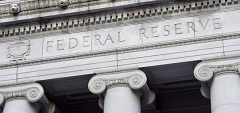Will Fed Hike Interest Rates In March?

The last week was full of comments from Fed officials. What can we learn from them?
We have already covered. Yellen’s Testimony before Congress. However, she was not the only FOMC member who spoke last week. Let’s then also analyze the opinions of other American central bankers.
Lacker
Jeffrey Lacker, Richmond Fed President, told the auditorium at the University of Delaware that “rates need to rise more briskly than markets now seem to expect” to restrain inflation pressures. Importantly, he added that the potential for greater fiscal stimulus implies more rapid increases in the Fed’s interest rate target than would otherwise be warranted:
“And the elevated uncertainty now surrounding fiscal policy, particularly the potential for substantial fiscal stimulus, suggests that our next increase should come sooner rather than later in order to reduce the risks associated with having to raise rates more rapidly later on.”
Lockhart
Dennis Lockhart, Atlanta Fed President, gave a speech at the Rotary Club in Huntsville, Alabama. He continued to expect a gradual pace of interest rate increases, as the cyclical recovery is largely completed. Actually, he pointed out that conditions are very similar to March 2007 when the Fed’s policy interest rate was set at 5.5 percent. Although Lockhart noted the negative secular trends, the signal is quite clear: brace yourself for hiking – March is a live meeting.
Kaplan
Robert Kaplan, Dallas Fed President, expressed confidence that the headline inflation rate should reach the Fed’s 2 percent objective in the medium term. In consequence, he also called for an interest-rate hike “sooner rather than later”, as it will “reduce the likelihood that the Fed will get ‘behind the curve’ and feel the need to remove accommodation more rapidly”.
Harker
Patrick T. Harker, Philadelphia Fed President, pointed out at La Salle University that employment generally was at the Fed’s goal, while inflation was on track to meet it. Therefore, he considered three hikes as appropriate this year, unless things would not stay on track.
Rosengren
Eric Rosengren, Boston Fed President, delivered a speech with the highly meaningful title “Monetary Policy as the Economy Approaches the Fed’s Dual Mandate” at the New York Association for Business Economics in New York. As the economy has continued to improve, Rosengren believes that more than three rate rise may be needed this year:
“As I will discuss today, with the economy at or approaching both elements of the Federal Reserve’s dual mandate (price stability and maximum sustainable employment), it is my view that it will likely be appropriate to raise short-term interest rates at least as quickly as suggested by the Fed’s current SEP median forecast, and possibly even a bit more rapidly than that forecast.”
Dudley
William Dudley, New York Fed President, said that the Fed would raise interest rates if the economy continued to grow:
“We expect to gradually remove further monetary policy accommodation and snug up interest rates a little bit further in the months ahead.”
Mester
Loretta Mester, Cleveland Fed President, declared on Monday in Singapore that the U.S. economy was on sound footing. Hence, she would be “comfortable with an increase in the (federal) funds rate at this point, if the economy keeps going the way it’s going.”
Conclusions
The key takeaway is that several Fed officials spoke last week, although only Dudley, Harker and Kaplan (apart from Yellen, of course) are voting FOMC members this year. Their views are hawkish, which implies that the U.S. central bank is on track to raise interest rates. Although the markets seem to doubt it, March is a live meeting. All of this is rather negative for gold bulls, as a more aggressive Fed implies a stronger U.S. dollar and weaker precious metals. A lot now depends on Trump’s policies. If he delivers some fiscal stimulus, the Fed should raise interest rates sooner rather than later. It should be bad a scenario for the yellow metal. If Trump fails to ease fiscal policy, the pace of tightening will be more gradual. This should be welcomed by gold bulls. Stay tuned!
Disclaimer: Please note that the aim of the above analysis is to discuss the likely long-term impact of the featured phenomenon on the price of gold and this analysis does not indicate (nor does it aim to do so) whether gold is likely to move higher or lower in the short- or medium term. In order to determine the latter, many additional factors need to be considered (i.e. sentiment, chart patterns, cycles, indicators, ratios, self-similar patterns and more) and we are taking them into account (and discussing the short- and medium-term outlook) in our trading alerts.


















